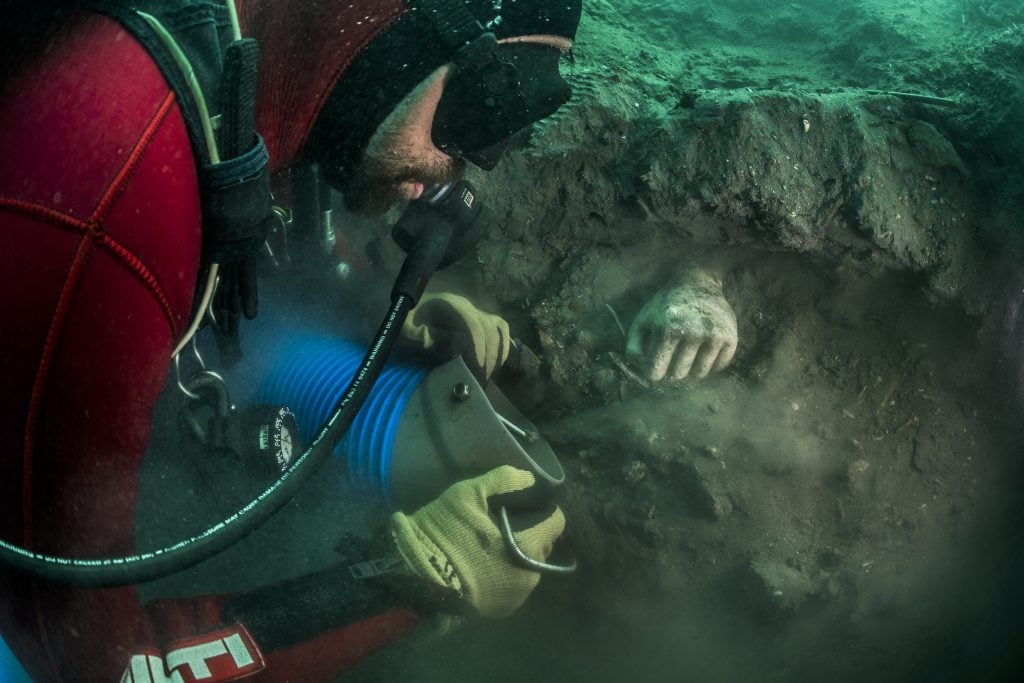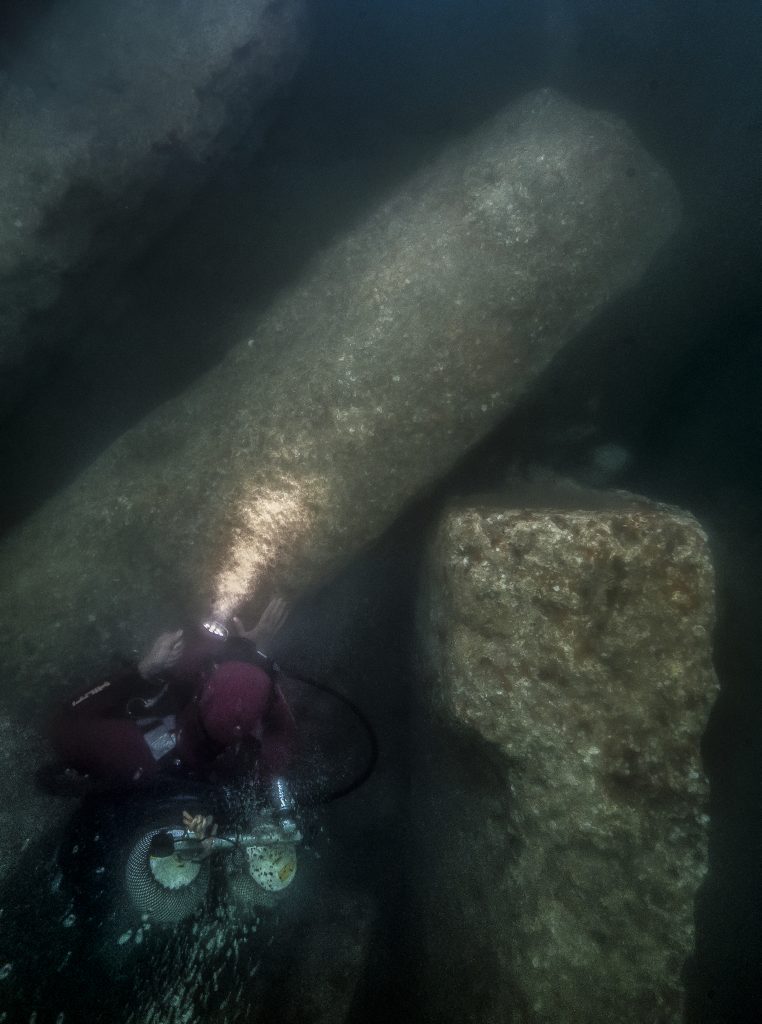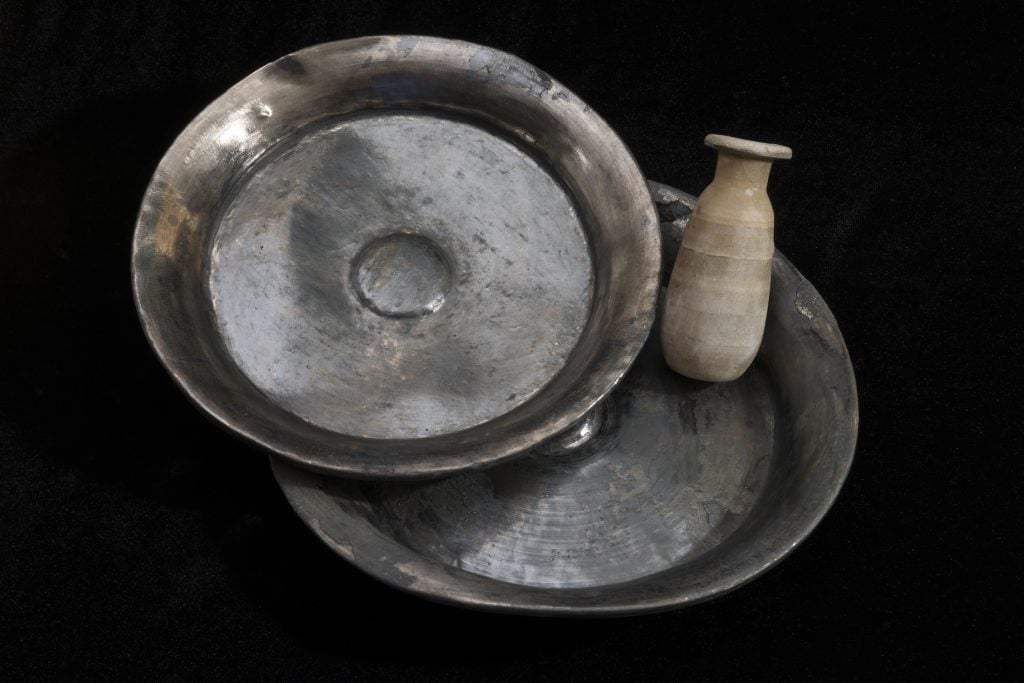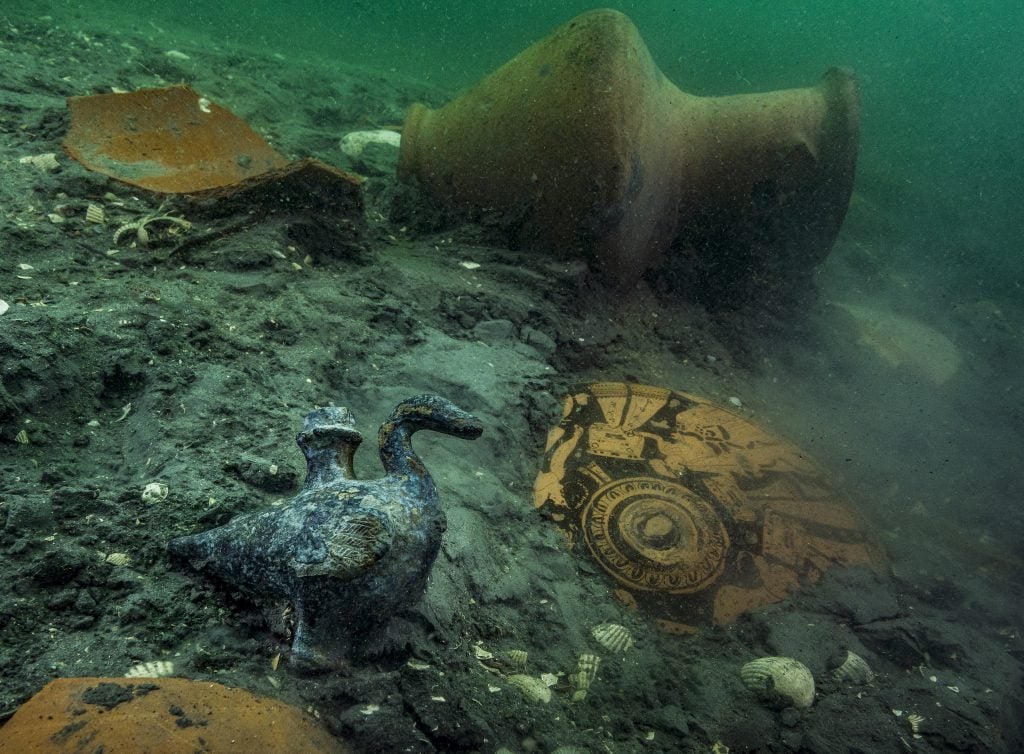Archaeology & History
See the Trove of Ancient Treasures, Including a Shrine to Aphrodite, Just Discovered in an Underwater City Off the Coast of Egypt
The finds include votives, jewelry, ritual instruments, and a duck-shaped pourer.

The finds include votives, jewelry, ritual instruments, and a duck-shaped pourer.

Sarah Cascone

Archaeologists have uncovered a trove of ancient treasures on the site of the sunken port city of Thonis-Heracleion, about four miles off Egypt’s coast, beneath the waters of the Bay of Aboukir in the Mediterranean Sea.
The European Institute for Underwater Archaeology (IEASM), which first discovered the lost city in 2000, conducted its most recent exploration of the site in conjunction with the Department of Underwater Archaeology of the Ministry of Tourism and Antiquities of Egypt.
French marine archaeologist and IEASM president Franck Goddio led the joint mission, which investigated the south canal of the ancient city. At some point in the 2nd century B.C.E., a natural disaster triggered the collapse of huge stone blocks from the temple of Amun, an important site for Pharaonic rituals.
The recent excavations have yielded a wealth of precious objects from the temple treasury, including silver ritual instruments, gold jewelry, and alabaster jars that would have held for perfumes.

Gold objects, jewelry and a Djed pilar, symbol of stability, made of lapis lazuli from Thonis-Heracleion, 5th century B.C.E. Photo by Christoph Gerigk ©Franck Goddio/Hilti Foundation.
“It is extremely moving to discover such delicate objects, which survived intact despite the violence and magnitude of the cataclysm,” Goddio said in a statement.
Thonis-Heracleion was Egypt’s biggest port for centuries, before being surpassed by Alexandria, founded by Alexander the Great in 331 B.C.E. The city was eventually lost thanks to a combination of rising sea levels, earthquakes, and tsunamis, disappearing beneath the waves along with a large section of the Nile delta. It was largely forgotten for centuries, until 21st-century archaeologists began investigating.
The most recent mission has uncovered well-preserved underground structures beneath the temple, made from wooden posts and beams from the 5th century B.C.E. To detect subterranean chambers and objects buried beneath yards of clay, the team used new geophysical prospecting technologies.
During the mission, archaeologists discovered a new sanctuary to Aphrodite, suggesting a strong presence of Greek settlers and traders in Thonis-Heracleion. Several finds of ancient Greek weapons provide further evidence of Grecian influence in the port city during the time of the Saïte dynasty (around 664 to 525 B.C.E.)
Other recent archaeological discoveries in Egypt include a 3,200-year-old underground tomb complex and two mummification workshops in the ancient Saqqara necropolis.
See more photos of the most recent Thonis-Heracleion excavations and their finds below.

After excavation, an archaeological diver gazes at the huge blocks of the Amun temple, which fell in the mid-second century B.C.E. in the south canal of Thonis-Heracleion. They were discovered under nearly 10 feet of hard clay. Photo by Christoph Gerigk ©Franck Goddio/Hilti Foundation.

Two silver ritual dishes for libations for the gods from the temple treasure. Silver was considered extremely precious in ancient Egypt. An alabaster container for unguents and perfumes was found amongst them. Thonis-Heracleion, 5th century B.C.E. Photo by Christoph Gerigk ©Franck Goddio/Hilti Foundation.

A delicate bronze duck-shaped pourer is discovered amongst ceramics of the 4th century B.C.E. on the site of a newly discovered Greek sanctuary to Aphrodite in Thonis-Heracleion. Photo by Christoph Gerigk ©Franck Goddio/Hilti Foundation.
More Trending Stories: